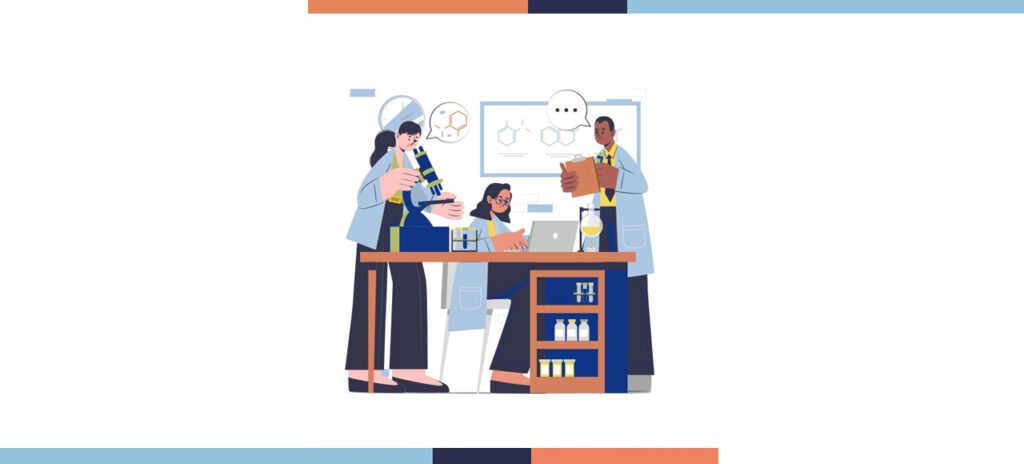Right at the start of the year, we learned from the media that from 4 January 2022 most tattoo inks and substances applied in permanent makeup will no longer be permitted for use. This includes, for example, certain azo dyes, carcinogenic aromatic amines, polycyclic aromatic hydrocarbons (PAH), metals and methanol. The transition period, the so-called “sunset date” had expired, and they were no longer REACH-compliant. But that was just the beginning.
For example, from 1 March this year, a whole range of items had to disappear from drugstore shelves, because the ingredient “lilial” (butylphenyl methylpropional), present in many cosmetic products, is forbidden throughout the EU and it was no longer permitted to sell products containing it. There is a good reason for this, because this synthetic fragrance, which has a smell similar to lily of the valley, has long been suspected of triggering allergies and damaging genetic material. After the advisory commission of the EU Commission had already warned about this ingredient explicitly in 2019, especially as it can easily get into the lungs in the form of hair-sprays or deodorants, it has even been officially classed as “reprotoxic” (toxic to reproduction and causing developmental malformations in offspring) in the EU since August 2020.
Which regulation is this about and what does it regulate?
The first of the amendments to chemicals legislation – fundamentally regulated by the so-called REACH Regulation (EC) No. 1907/2006 in the European Union – which were already adopted by the EU Commission in 2021 have been in force since the beginning of January 2022. REACH stands for Registration, Evaluation, Authorization and Restriction of Chemicals and this regulation has been enacted in order to improve the protection of human health and the environment against the risks that can arise due to chemicals. This very complex EU regulation came into force throughout the EU on 1 June 2007 and has since then been continuously updated and adjusted.
What exactly is changing?
Essentially, this is about three amending regulations which relate to the REACH Annexes XVII and XIV: 1. With the “Regulation (EU) 2020/2081 amending Annex XVII as regards tattoo inks or permanent make-up” new substances have been included which must not be put into circulation in mixtures for use for tattooing purposes, and mixtures which contain such substances which may no longer be used for tattooing purposes after 4 January 2022. 2. A further amendment with the title “Regulation (EU) 2020/2096 as regards the restrictions in Annex XVII…” relates to substances which are cancer-producing, mutagenic or toxic for reproduction. And with 3. the “Regulation (EU) 2020/2160” for amendment of the REACH Annex XIV refers to a substance group that is used in the diagnosis of COVID-19 and in the manufacturing of instruments for fighting the corona pandemic.
So not only are new substances being included, but also some regulations toughened for already existing substances. The reason for this are the dangerous properties of so-called CMR substances (Carcinogenic, Mutagenic, toxic to Reproduction) and SVHC (Substances of Very High Concern) which have been included in the Authorization List in Annex XIV of the REACH Regulation.
Closely connected to this is the so-called CLP Regulation (EC) No. 1272/2008, relating to the Classification, Labeling and Packaging of substances and mixtures, which is intended to protect people and the environment from the dangers posed by chemicals through the use of internationally agreed labeling elements (pictograms). The hazard classes of the CLP Regulation here refer to dangerous physical and chemical properties and hazards for health and the environment, divided into groups according to the severity of the hazard.
Are you and your product affected by the REACH Regulation?
As the REACH Regulation fundamentally applies to all substances (chemicals) manufactured or used in the EU, and to substances in mixtures and products (e.g. furniture and clothing), it has effects on a multitude of companies in a wide variety of industries, including ones that do not regard themselves as dealing with chemicals, and it is highly likely that your product also comes under this directive.
You are affected in any case if you act as a manufacturer, which is to say manufacture chemicals for your own use or to supply to others (including for export), or as an importer if you purchase substances outside the EU, whether as individual chemicals, mixtures for onward sale or finished products such as textiles, furniture, cosmetics and plastic goods. Even as a downstream user of substances (manufacturer of mixtures such as paints, inks, textile auxiliary substances etc.) you must check what duties you have according to REACH (risk reduction measures, passing on of information to customers and suppliers etc.), because most companies use chemicals, sometimes even without knowing it.
Are not medical and in-vitro diagnostic products “generally” excluded from this?
No, because both the REACH and CLP regulations refer to medical products; these regulations differ, however, in the scope and definition of their area of application. Therefore, each medical and in-vitro diagnostic product must be individually considered according to its use and checked with respect to the REACH and CLP requirements. In general, medical products are excluded from many areas of application of the two regulations, whereas in-vitro diagnostic products are only excluded from the CLP Regulation and are by definition always subject to the REACH Regulation.
Exceptions, however, are radioactive substances, substances under customs supervision, the transportation of substances, non-isolated intermediates and polymers. Partial exceptions are e.g. pesticides, additives and aromatics in foodstuffs and pharmaceuticals. These substances are subject to their own separate legal regulations.
What do the revisions mean for economic operators who are affected?
Because REACH requires self-responsibility on the part of industry, every manufacturer, importer and downstream user of chemicals in the scope of REACH must ensure that they are correspondingly registered if they are put into circulation. For this, data on toxicity and use, including an estimation of the extent to which people may be exposed to these substances, must be submitted to the ECHA (European Chemicals Agency). Further information and a so-called candidate list of substances of very high concern which might possibly receive approval are published on the ECHA homepage and continually updated.
“No data, no market” and how we as an experienced language service provider can help you
The validation procedure and the classification of your materials are not enough on their own, however. Marking, product labels, packaging and safety data sheets must also be newly created or revised. The principle “no data, no market” applies here. This primarily concerns the Material Safety Data Sheets (MSDS), Safety Data Sheets (SDS) and extended Safety Data Sheets (eSDS), and these must, in accordance with Article 31 (5) of the REACH Regulation, be provided in the respective official language of the EU member country in which the product is to be put into circulation. In addition to this, in Annex II, Part A, 1.1. of the same regulation, it is stipulated that for substances or mixtures, the product identifier, which is to say the substance name, must also be translated into the respective official language of the destination country, both on the identification label and on the safety data sheet.
This is where we come in. With our experience and a technically competent team of translators, we can produce for you professionally translated and localized product labels, hazard labeling and safety data sheets that meet all legal requirements. We pay attention to adherence to content and format specifications and insert all the information required in the destination country (first-aid measures, emergency numbers etc.), so that your documents meet the guideline of the ECHA and the REACH legislation.
We will be happy to advise you.

